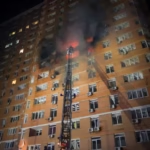The number of gas fireplaces has grown dramatically in recent years. There are currently numerous brands in the market, and each promises high-level performance. As a result, many people are overwhelmed and unable to decide on the best gas fireplace for their homes. Regardless, a decision must be made.
When choosing a fireplace, there is a lot to consider. For example, cost, the space’s size, the fireplace’s location, and its venting requirements are some factors that guide a decision on the ideal fireplace. Undoubtedly, some knowledge on the top gas fireplace will help bring the selection process to a close. Here are a few crucial things that can help you choose a good gas fireplace.
Types of gas fireplace technologies available
Ideally, technology is the foundation of a suitable gas fireplace. Currently, two basic types of technology are available to operate a gas fireplace effectively. Let’s take a closer look at them.
B Vent
The B vent works by drawing air from within the room and emitting most of the burnt gases via a flue pipe. The flue system terminates vertically on a roof or horizontally to an external wall with a powered emission system. Unfortunately, B Vent fireplaces reduce the room’s oxygen levels and cannot be installed in bedrooms or poor;y ventilated spaces. Nonetheless, the fireplace adds ambience to a room by exuding the aesthetics of a classic open wood fireplace.
Balanced Flue
The balanced flue is also known as the direct vent. It works by drawing oxygen from outside the fireplace and expelling the bi-product through another pipe. The flue systems of most direct vent fireplaces can be terminated vertically or horizontally. However, specific fireplaces that use the technology require a powered flue system. Direct vent fireplaces, unlike B vents, do not affect the oxygen levels in a room. As a result, they can be positioned anywhere in the house. Moreover, the fireplaces can heat up vast spaces of up to 250sqm.
How are gas fireplaces installed?
Most gas fireplaces are fitted into a timber frame and completed with a non-combustible wall lining, such as a cement sheet. On the other hand, some fireplaces are designed to fit into existing slots in brick walls. These are referred to as inserts. Gas inserts are heavily insulated to keep their size to a minimum.
Regardless of the fireplace, each option has a different flue that works to satisfy the required efficiency standards. All fireplaces have a maximum number of chimneys that can be installed. Moreover, specifications are provided for the flue’s full length and the number of bends permitted.
The designs available
Gas fireplaces come in various shapes and sizes. The traditional design mimics the wood-burning stove and maintains its classic appeal. However, newer styles incorporate sleek finishes and contemporary themes.
Simple fireplaces and inserts often have one viewing window. On the other hand, contemporary frameless designs have at least two viewing windows, creating a unique look in the living area. Another design option for entertainment areas is the tabletop gas fireplace. The tabletop design is a neat homage to the popular campfire. The catalogue for fireplace designs is long; however, there is something for everyone.
All in all, a gas fireplace is an excellent addition to a living space. If you can get one, don’t think twice.















